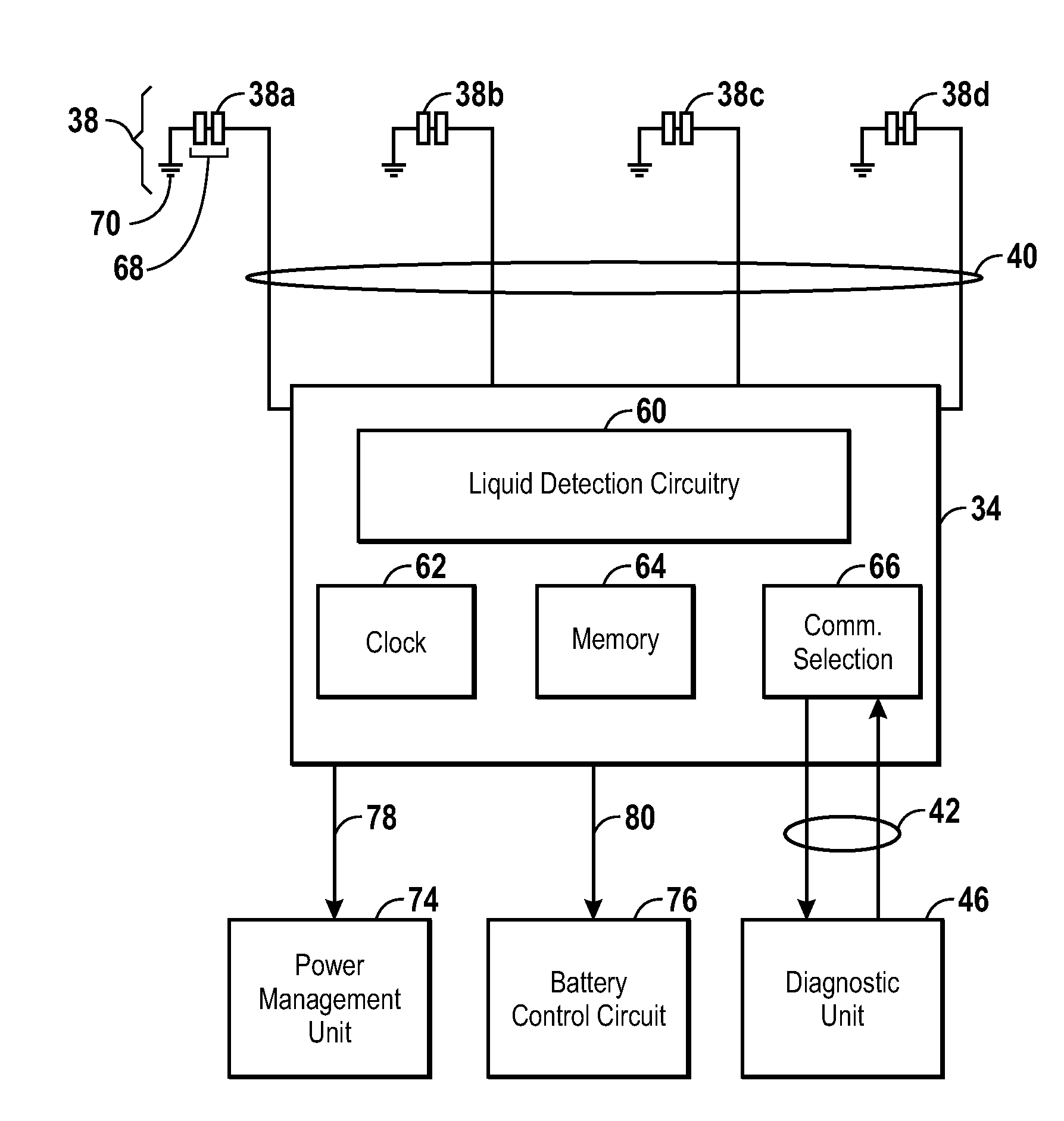Consumer abuse detection system and method
a detection system and consumer technology, applied in the field of consumer abuse detection system and method, can solve the problems of exposing electronic devices to liquids, consumer abuse, and the percentage of products sold will eventually malfunction or become inoperable, and achieve the effect of quick and easy detection and reduced risk of damage to the device from the abuse even
- Summary
- Abstract
- Description
- Claims
- Application Information
AI Technical Summary
Benefits of technology
Problems solved by technology
Method used
Image
Examples
second embodiment
[0090]Referring now to FIG. 6, the present invention is illustrated. In particular, the presently illustrated abuse detection system 34 of FIG. 6 is adapted to detect the occurrence of consumer abuse due to exposing a device 10 to extreme temperatures and may include thermal detection circuitry 156, as well as the above discussed clock 62, non-volatile storage 64, and communication selection block 66. A thermal sensor 38e may be electronically coupled to the abuse detection system 34 via the communication line 40. The thermal sensor 38e of the presently illustrated embodiment may be provided by a thermocouple, a thermistor, a negative temperature coefficient (NTC) resistor, or by any suitable device capable of sensing temperature.
[0091]In the presently illustrated embodiment, the thermal sensor 38e may be positioned either internally or externally with respect to the device 10. In an alternative embodiment, the thermal sensor 38e may be integrated with the abuse detection system 34 ...
third embodiment
[0098]FIG. 7 illustrates the abuse detection system 34 of the present invention which is adapted to detect consumer abuse events relating to excessive shock or drop events. The abuse detection system 34 of FIG. 7 may include shock detection circuitry 158, as well as the above discussed clock 62, non-volatile storage 64, and the communication selection block 66. A shock sensor 38f may be electronically coupled to the abuse detection system 34 via the communication line 40. In certain embodiments, the shock sensor 38f may be provided by any suitable device for measuring shock, movement, vibrations, and so forth. For example, the shock sensor 38f may be implemented via an accelerometer configured to measure vibrations or acceleration due to gravity. Additional types of shock sensors which may be used are described in U.S. patent application Ser. No. 11 / 725,008, entitled “Mounted Shock Sensor,” filed Mar. 15, 2007, which is assigned to the assignee of the present invention, the disclosu...
PUM
 Login to View More
Login to View More Abstract
Description
Claims
Application Information
 Login to View More
Login to View More - R&D
- Intellectual Property
- Life Sciences
- Materials
- Tech Scout
- Unparalleled Data Quality
- Higher Quality Content
- 60% Fewer Hallucinations
Browse by: Latest US Patents, China's latest patents, Technical Efficacy Thesaurus, Application Domain, Technology Topic, Popular Technical Reports.
© 2025 PatSnap. All rights reserved.Legal|Privacy policy|Modern Slavery Act Transparency Statement|Sitemap|About US| Contact US: help@patsnap.com



